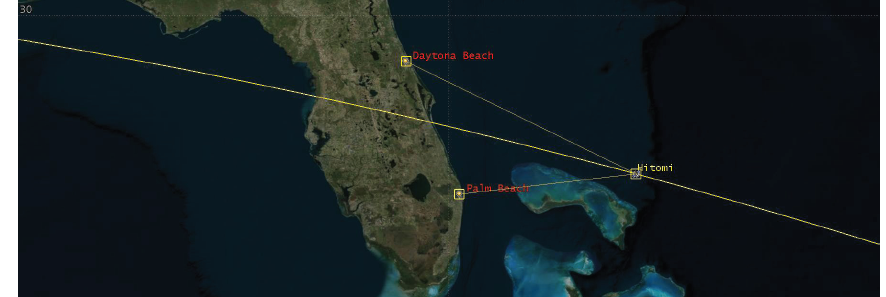
OSCOM is a highly portable system and can be fully deployed with an hour or two of setup time in the field. This capability enables multi-point simultaneous observations if the manpower and equipment are available. The total system cost is less than $10K and is thus feasible. The system’s capability was showcased by doing observations of Hitomi debris from two locations simultaneously. Hitomi, also known as ASTRO-H, was a Japanese X-ray astronomy satellite which experienced a catastrophic event on March 26, 2016. Shortly afterwords, the U.S. JSpOC reported several pieces of debris from the breakup.The brightness of the main piece, peaking between magnitude 2 and 3 in the SDSS r’ band, allowed photometric measurements to be made at over 100 Hz for several passes of the satellite over the span of a month. Shown above is an 8 second duration when Hitomi was observed simultaneously from two sites 180 miles apart to provide two different look angles at the tumbling satellite. The flight path modeled in AGI STK is shown below. The data shown above is when the satellite was towards south-east from Daytona and towards east-north-east of Palm Beach. Note that as the two sites have a different look angle the overall photometry output is different, and yet the high cadence measurements show a consistent flash pattern with a primary period of about 2.6 seconds. It is conceivable that such simultaneous multi-point measurements can aid in faster attitude determination of the resident space object if its configuration and geometry were known a-priori. Further details of the effort can be found in our peer reviewed paper in Sensors journal: Multi-site simultaneous time-resolved photometry with a low cost electro-optics system.
